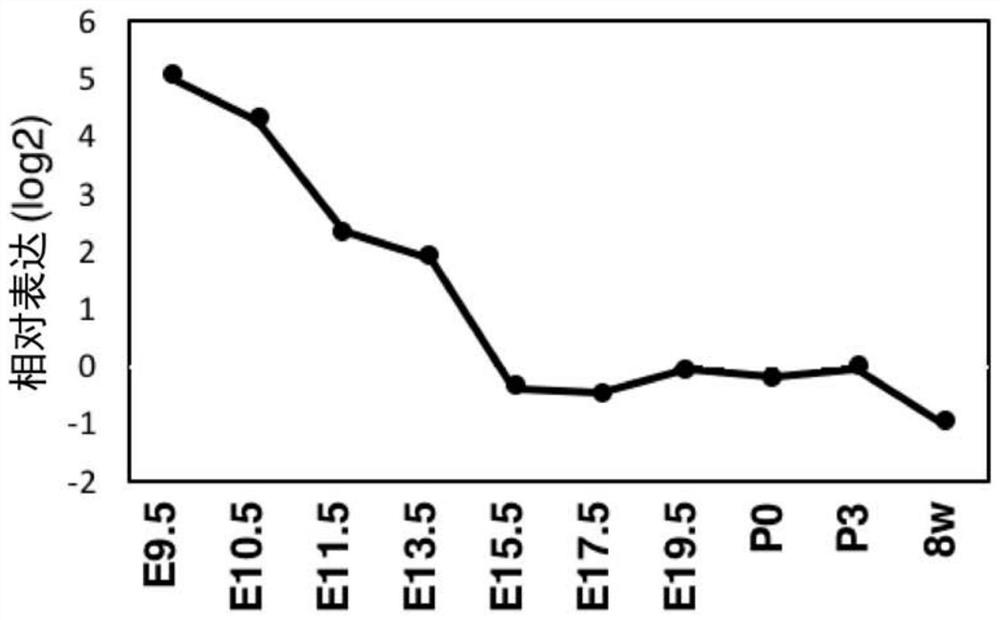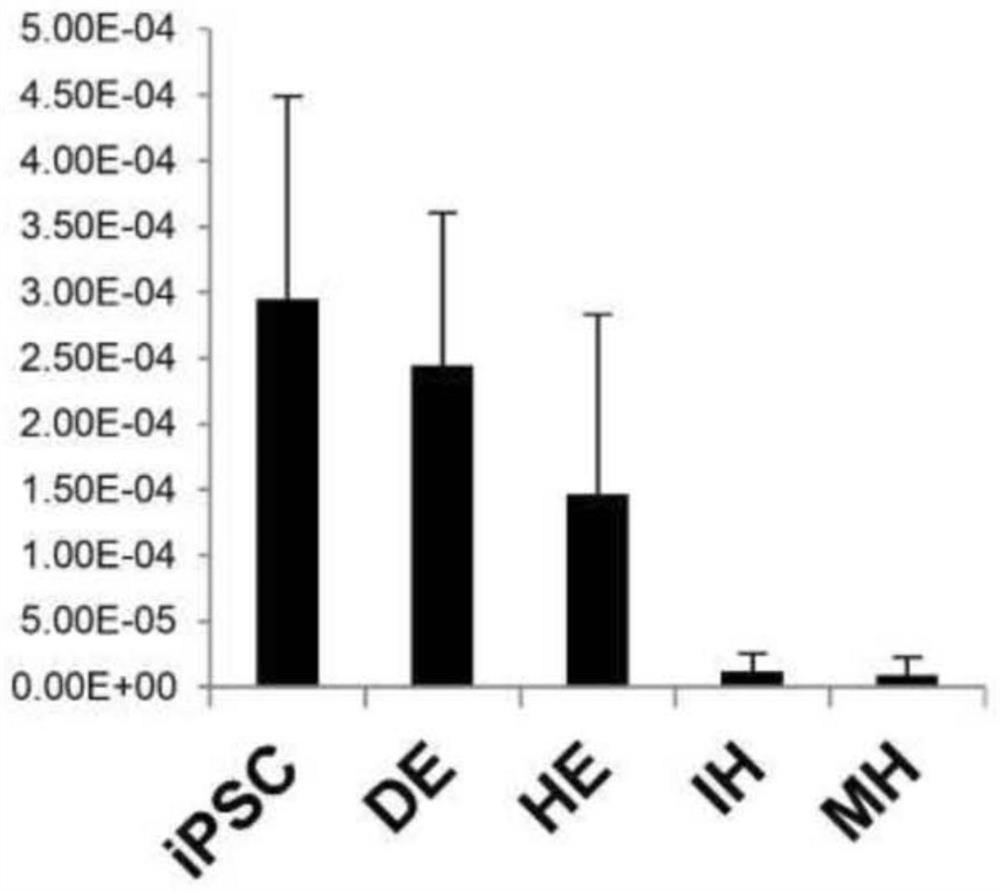Undifferentiated cell detection method
A differentiated cell, undifferentiated technology, applied in biochemical equipment and methods, analytical materials, measuring devices, etc., can solve the problem of inability to use iPS cells, and achieve the effect of reducing the risk of cancer.
- Summary
- Abstract
- Description
- Claims
- Application Information
AI Technical Summary
Problems solved by technology
Method used
Image
Examples
Embodiment 1
[0086] Materials and methods
[0087] ● iPSCs
[0088] Those provided by Kyoto University and Tokyo University (TkDA3-4, 1231A3, 1383D2, 1383D6 and Ff01) were used.
[0089] ●Mesoderm differentiation
[0090] Undifferentiated iPSCs were plated on laminin-coated plates at 1-2x10^4 cells / cm in the presence of ROCK inhibitor (Y-27632). 2 The density was inoculated, cultured in the presence of DMEM F12+B27+CHIR+BMP4 for 4 days, and the cells were regarded as mesoderm cells (Mesoderm).
[0091] ●Ectoderm differentiation
[0092] Undifferentiated iPSCs were plated on laminin-coated dishes at 1x10^5 cells / cm in the presence of ROCK inhibitor (Y-27632) 2 The density was inoculated, cultured in the presence of DMEM F12+KSR+2-ME+EGF+2bFGF+SB431542+BIO for 7 days, and the cells were regarded as ectoderm cells (Ectoderm). Or cultured in the presence of KBM-NSC+B27+bFGF+hLIF+CHIR99021+SB431542 for 7 days to obtain ectoderm cells (Ectoderm).
[0093] ●Undifferentiated remnants
[009...
Embodiment 2
[0156] Antibodies, etc. can be used by introducing reporter protein genes (fluorescent protein genes such as luciferase gene, GFP gene, etc., or mouse CD4 gene, etc.) under the control of the promoter region involved in the expression control of the marker gene of the present invention. detection of specifically expressed genes, etc.), it is possible to detect residual undifferentiated cells without directly detecting the expression of the marker gene of the present invention.
Embodiment 3
[0158] For a plurality of iPS cell lines, target cells and cells induced to differentiate using a 3 germ layer differentiation kit etc. are evaluated for the expression of the marker gene of the present invention, and by selecting an iPS cell line with a lower expression of the marker gene, thereby It is possible to select undifferentiated cell lines with high safety.
PUM
 Login to View More
Login to View More Abstract
Description
Claims
Application Information
 Login to View More
Login to View More - R&D
- Intellectual Property
- Life Sciences
- Materials
- Tech Scout
- Unparalleled Data Quality
- Higher Quality Content
- 60% Fewer Hallucinations
Browse by: Latest US Patents, China's latest patents, Technical Efficacy Thesaurus, Application Domain, Technology Topic, Popular Technical Reports.
© 2025 PatSnap. All rights reserved.Legal|Privacy policy|Modern Slavery Act Transparency Statement|Sitemap|About US| Contact US: help@patsnap.com



